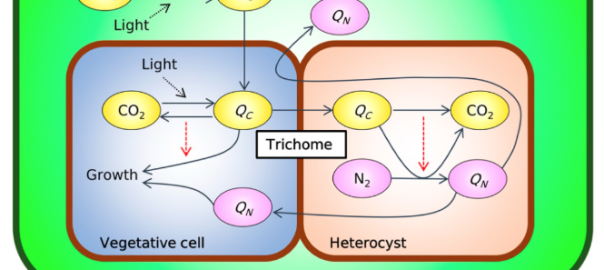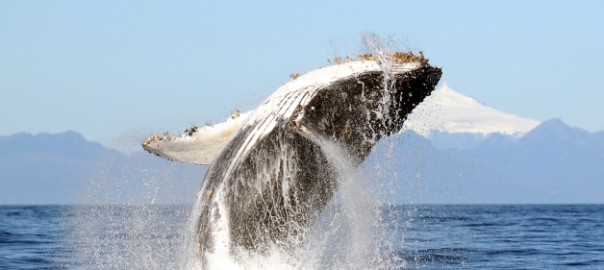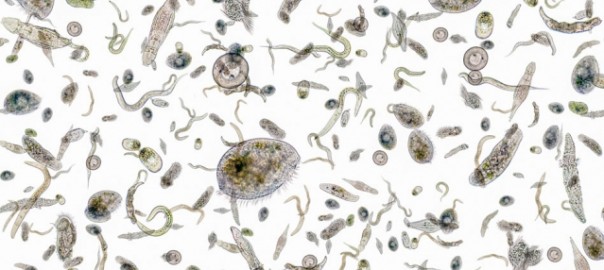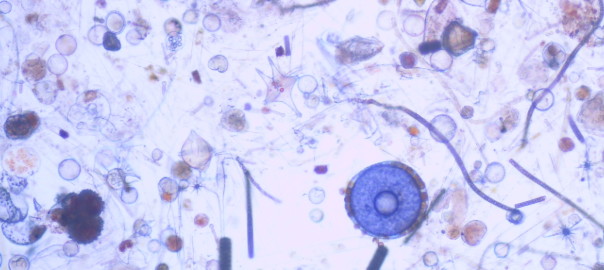Inomura, K. A-W. Omta, D. Talmy, J. Bragg, C. Deutsch, and M.J. Follows (2020), A Mechanistic Model of Macromolecular Allocation, Elemental Stoichiometry, and Growth Rate in Phytoplankton, Frontiers in Microbiology, doi: 10.3389/fmicb.2020.00086 Continue reading A Mechanistic Model of Macromolecular Allocation, Elemental Stoichiometry, and Growth Rate in Phytoplankton
Tag Archives: publication
Murat Aydin, Gregory L Britten et al (2020), Anthropogenic impacts on atmospheric carbonyl sulfide since the 19th century inferred from polar firn air and ice core measurements, Earth and Space Science Open Archive, doi: 10.1002/essoar.10503126.1 Continue reading Anthropogenic impacts on atmospheric carbonyl sulfide since the 19th century inferred from polar firn air and ice core measurements

Fellow Travelers
Observations suggest diazotrophs like Crocosphaera and Trichodesmium pay for their ability to fix nitrogen with a very low growth rate, yet diatom-diazotroph associations or DDAs exhibit high growth rates. CBIOMES postdoctoral fellow Chris Follett and co-authors use a cell flux model to test the hypothesis that diatom-diazotroph associations or DDAs grow faster than unpaired diazotrophs because the diatoms in DDAs provide organic carbon to their diazotroph guests that boost their growth rate. Continue reading Fellow Travelers

3 Questions: Greg Britten on how marine life can recover by 2050
Committing to aggressive conservation efforts could rebuild ocean habitats and species populations in a few decades. Continue reading 3 Questions: Greg Britten on how marine life can recover by 2050
Peipei Wu, Emily J Zakem, Stephanie Dutkiewicz, Yanxu Zhang (2020), Biomagnification of methylmercury in a marine plankton ecosystem, Environ. Sci. Technol., doi: 10.1021/acs.est.9b06075 Continue reading Biomagnification of methylmercury in a marine plankton ecosystem

Seeding Oceans with Iron may not Impact Climate Change
Darwin Project study led by Jonathan Lauderdale finds Earth’s oceans contain just the right amount of iron; adding more may not improve their ability to absorb carbon dioxide. Continue reading Seeding Oceans with Iron may not Impact Climate Change

Exploring Phytoplankton Diversity
reporting by Helen Hill
In a new paper, MIT-CBIOMES investigator Stephanie Dutkiewicz and collaborators use the Darwin ecosystem model to develop theories seeking to explain and predict phytoplankton biogeography.
Continue reading Exploring Phytoplankton Diversity
Keisuke Inomura, Christopher L. Follett, Takako Masuda, Meri Eichner, Ondřej Prášil and Curtis Deutsch (2020), Carbon Transfer from the Host Diatom Enables Fast Growth and High Rate of N2 Fixation by Symbiotic Heterocystous Cyanobacteria, Plants, doi: 10.3390/plants9020192 Continue reading Carbon Transfer from the Host Diatom Enables Fast Growth and High Rate of N2 Fixation by Symbiotic Heterocystous Cyanobacteria
IOCCG (2020), Synergy between Ocean Colour and Biogeochemical/Ecosystem Models. Dutkiewicz, S. (ed.), IOCCG Report Series, No. 19, International Ocean Colour Coordinating Group, Dartmouth, Canada, doi: 10.25607/OBP-711 Continue reading Synergy between Ocean Colour and Biogeochemical/ Ecosystem Models
A.M. Kuhn, S. Dutkiewicz, O. Jahn, S. Clayton, T.A. Rynearson, M.R. Mazloff, A.D. Barton (2019), Temporal and spatial scales of correlation in marine phytoplankton communities, JGR Oceans, doi: 10.1029/2019JC015331
Continue reading Temporal and spatial scales of correlation in marine phytoplankton communities